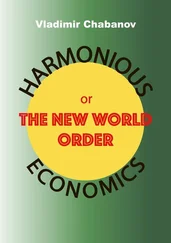In Britain and the Netherlands, there was visible growth acceleration by the late eighteenth century, especially in sectors such as cotton textiles and iron. [27] Britain’s cotton textile output grew at 1.4 per cent per year during 1700–1760, but grew at 7.7 per cent per year during 1770–1801. Especially between 1780 and 1790, the growth rate was 12.8 per cent per year – high even by today’s standards but astonishing at the time. The iron industry increased its output by 5 per cent per year between 1770 and 1801. These figures are calculated from N. Crafts, British Economic Growth during the Industrial Revolution (Oxford: Clarendon Press, 1995), p. 23, table 2.4.
As a result, during 1500–1820, Britain and the Netherlands achieved per capita economic growth rates of 0.27 per cent and 0.28 per cent per year, respectively. These are very low by modern standards, but they were still double the Western European average. Behind this lay a number of changes.
Emergence of new sciences, technologies and institutions
First came the cultural shift towards more ‘rational’ approaches to understanding the world, which promoted the rise of modern mathematics and sciences. Many of these ideas were initially borrowed from the Arab world and Asia, [28] See J. Hobson, The Eastern Origins of Western Civilization (Cambridge: Cambridge University Press, 2004) for evidence on how the early scientific and technological developments in the West drew extensively from the Arab, Indian and Chinese worlds.
but in the sixteenth and seventeenth centuries, the Western Europeans started adding their own innovations. The founding fathers of modern science and mathematics – such as Copernicus, Galileo, Fermat, Newton and Leibniz – are from this era. This development of science did not immediately affect the broader economy, but it later enabled the systemization of knowledge that made technological innovations less dependent on individuals and thus more easily transferable, which encouraged the diffusion of new technologies and thus economic growth.
The eighteenth century saw the emergence of several new technologies that heralded the advent of a mechanized production system, especially in textiles, steel-making and chemicals. [29] These included the flying shuttle (1733) and spinning jenny (1764) in the textile industry, coke-smelting (1709) in steel-making and various processes for large-scale sulphuric-acid manufacture (the 1730s and the 1740s) in the chemical industry.
As in Adam Smith’s pin factory, a finer division of labour was developing, with the use of continuous assembly lines spreading from the early nineteenth century. In the emergence of these new production technologies, a key driver was the desire to increase output in order to be able to sell more and thus make more profit – in other words, the spread of the capitalist mode of production. As Smith argued in his theory of division of labour, the increase in output made a finer division of labour possible, which then increased productivity and consequently output, setting off a ‘virtuous cycle’ between output growth and productivity growth.
New economic institutions emerged to accommodate the new realities of capitalist production. With the spread of market transactions, banks evolved to facilitate them. Emergence of investment projects requiring capital beyond the wealth of even the richest individuals prompted the invention of the corporation , or limited liability company, and thus the stock market.
Colonial expansion starts
The Western European countries started to expand rapidly outwards from the early fifteenth century. Euphemistically known as the ‘Age of Discovery’, this expansion involved expropriating land, resources and people for labour from the native populations through colonialism.
Beginning with Portugal in Asia and Spain in the Americas from the late fifteenth century, the Western European nations ruthlessly moved out. By the middle of the eighteenth century, North America was divided up between Britain, France and Spain. Most Latin American countries were ruled by Spain and Portugal until the 1810s and the 1820s. Parts of India were ruled by the British (mainly Bengal and Bihar), the French (the southeastern coast) and the Portuguese (various coastal areas, especially Goa). Australia was beginning to be settled around this time (the first penal colony was established in 1788). Not much of Africa was affected yet, with small colonies along the coasts settled by the Portuguese (the formerly uninhabited islands of Cape Verde and Sao Tome and Principe) and the Dutch (Cape Town in the seventeenth century).
Colonialism was run on capitalist principles. Symbolically, until 1858, British rule in India was actually administered by a corporation (the East India Company), not by the government. These colonies brought new resources to Europe. The early expansions were motivated by the quest for precious metals to use as money (gold and silver) and spices (especially black pepper). Over time, plantations using slaves, mostly captives from Africa, were established in the new colonies – especially the US, Brazil and the Caribbean – to grow and bring back to Europe new crops such as (cane) sugar, rubber, cotton and tobacco. Some of the New World crops were grown in Europe and beyond and became basic food items. It stretches the imagination to think of the days when the British did not have their chips, the Italians lacked tomatoes and polenta (made with maize, or sweetcorn) and the Indians, the Thais and the Koreans did not eat any chillies.
Colonialism leaves big scars
There is a long-running debate on whether capitalism could have developed without the colonial resources of the sixteenth–eighteenth centuries – precious metal to be used as money, extra food sources such as potato and sugar and industrial inputs such as cotton. [30] An authoritative and balanced discussion on this is provided by P. Bairoch, Economics and World History: Myths and Paradoxes (New York and London: Harvester Wheatsheaf, 1993), Chapters 5–8.
While there is no question that the colonizers greatly benefited from those resources, those countries would probably have developed capitalism even without them. There is no question, however, that colonialism devastated colonized societies.
Native populations were exterminated or driven on to the margins. Their land, and the resources over and under it, was taken away. Marginalization of the indigenous population has been so extensive that Evo Morales, the current president of Bolivia, elected in 2006, is only the second head of state from the indigenous population in the Americas since the Europeans arrived in 1492 (the first was Benito Juarez, the Mexican president between 1858 and 1872).
Millions of Africans – 12 million is a common estimate – were captured and shipped out as slaves by both the Europeans and the Arabs. This was not only a tragedy for those who became slaves (if they survived the atrocious journey) but it also depleted many African societies of workers and destroyed their social fabric. Countries were created out of thin air, with arbitrary boundaries, affecting the internal and the international politics of those countries to this day. The fact that so many borders in Africa are straight is a testimony to that; natural borders are never straight because they are usually formed along rivers, mountain ranges and other geographical features.
Colonialism often meant the deliberate destruction of existing productive activities in the economically more advanced regions. Most importantly, in 1700, Britain banned the import of Indian cotton textiles (‘calicoes’) – we encountered the event in Chapter 2 – in order to promote its own cotton textile industry, dealing a heavy blow to the Indian cotton textile industry. The industry was finished off in the mid-nineteenth century by the influx of exports from the then mechanized British cotton textile industry. As a colony, India could not use tariffs and other policy measures to protect its own producers against British imports. In 1835, Lord Bentinck, the Governor-General of the East India Company, famously reported that ‘the bones of the cotton weavers are bleaching the plains of India’. [31] B. Hartmann and J. Boyce, Needless Hunger (San Francisco: Institute for Food and Development Policy, 1982), p. 12.
Читать дальше












